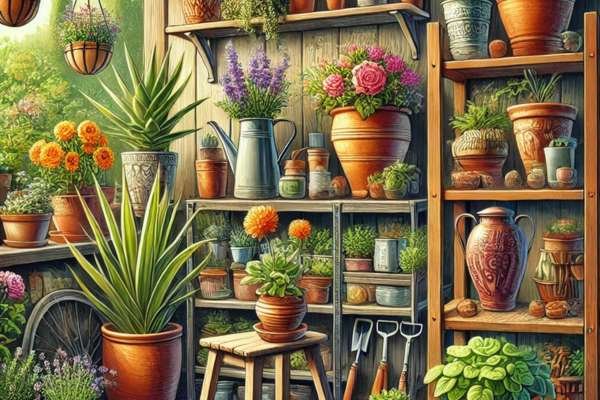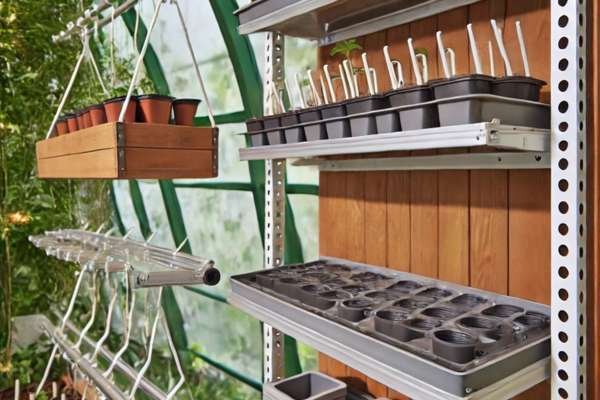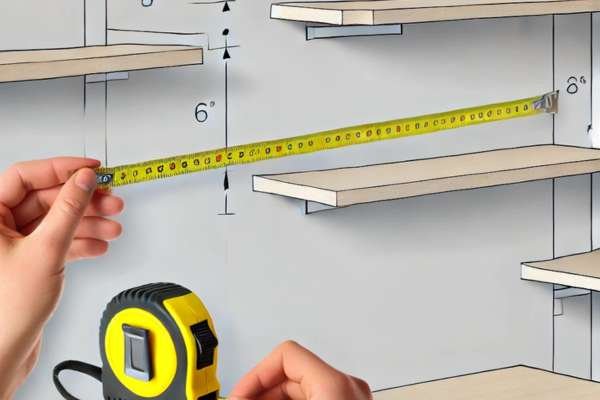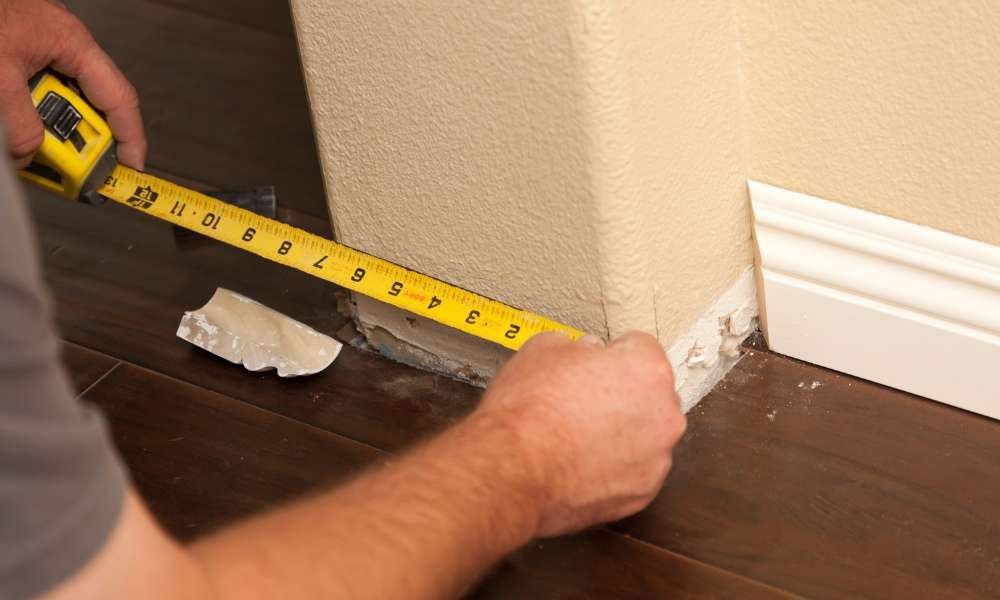Painting metallic cabinets is a pretty powerful manner to rejuvenate old or worn shelving gadgets, giving them a fresh, new appearance at the same time as extending their lifespan. Whether you’re updating your home, workplace, or workshop, studying how To Measure For Shelves can rework these useful portions into elegant elements of your decor. This step-by-step manual will stroll you through the entire technique, from choosing the right materials to making use of the appropriate end. By studying the techniques of portraying metallic shelves, you’ll no longer simplest decorate their aesthetic attraction but also shield them from rust and wear, making sure they stay durable and visually attractive for future years
1. Navigating the World of Gardening Shelves: Different Strokes for Different Folks

Shelving in the gardening world is far from one-size-fits-all. The diverse needs of a gardener require a range of shelving solutions, each tailored to specific tasks and environments.
Indoor Plant Shelves: Maximizing Space with Elegance
For the indoor gardener, racks are more than practical—they’re an opportunity to create artful plant displays. The choice of shelving can influence how your plants thrive and how your space feels. Floating racks, for instance, are a chic choice for small pots and trailing plants, offering a cascading green waterfall effect. On the other hand, a tiered rack brings the garden indoors, stacking your plants vertically to create a lush, multi-layered green space.
Weather-Resistant Outdoor Shelving: Built to Last
Outdoor shelving needs to be as resilient as the gardener who braves the elements. Whether you’re storing heavy bags of soil, pots, or decorative items, durability is paramount. Materials like treated wood, metal, or plastic, which resist the ravages of weather, are essential. Open shelving units, in particular, offer the added benefit of improved air circulation, which can reduce moisture buildup and prevent mold—crucial in outdoor environments.
Adjustable Shelving: The Ever-Evolving Gardener’s Ally
Gardening is an ever-changing pursuit. As your collection of tools, plants, and other gardening paraphernalia grows, so too must your storage solutions. Adjustable racks provide the flexibility to adapt to your evolving needs. These versatile units can be reconfigured to accommodate everything from towering plant pots to compact seed trays, making them a smart investment for any gardener.
2. Preparing for Shelving Installation: Setting the Stage for Success
Before you grab your tape measure, take a moment to prep your space. This involves evaluating your chosen area, clearing obstacles, and gathering your tools—each step is critical to a smooth installation process.
Evaluating the Space: The Perfect Spot for Racks
Start by pinpointing the exact location of your racks. Practicality and aesthetics should guide your choice. Consider whether the shelves will be exposed to sunlight or rain, and how accessible they’ll be while you’re working in the garden. Don’t forget to think about height—can you reach the top shelf without needing a ladder? These considerations will ensure your racks are both functional and easy to use.
Clearing and Cleaning: Ready, Set, Shelve
Once you’ve selected the spot, it’s time to clear the area. Remove anything that might obstruct the installation process, and take this opportunity to clean the space. A fresh, uncluttered area not only makes the installation easier but also helps you visualize how the shelves will look once they’re in place.
The Tools of the Trade: Essential Equipment for Measuring
For accurate measurement, the right tools are a must. A tape measure is your go-to for gauging length, width, and height. A spirit level ensures that your racks will be perfectly straight, while a pencil and notepad are handy for recording measurements. If you’re installing shelves on a wall, a stud finder will help locate the best mounting spots. For adjustable shelves, a screwdriver or drill might also be necessary.
3. A Step-by-Step Guide to Perfect Shelf Measurements
With your space prepped and tools in hand, it’s time to measure. This guide will walk you through the process, ensuring your racks fit perfectly and serve their intended purpose. A. Determining Shelf Purpose: The Key to Accurate Measurement
Before you measure, consider what you’ll store. Will your shelves display plants, hold heavy bags of soil, or organize gardening tools? The intended use of your racks will dictate their size, material, and placement. For instance, racks meant for heavy items like pots and soil should be sturdier and positioned lower for easy access.
Vertical Space: How High Should Your Shelves Go?
Vertical space is a critical factor in shelf installation. Start by measuring from floor to ceiling or from the base of the wall to the top. Consider the height of the items you plan to store—tall plants, for example, will need ample vertical space. Don’t forget to factor in the thickness of the racks themselves when calculating this space.
Horizontal Space: Finding the Perfect Length and Depth
Next, measure the horizontal space. The length should align with the width of the wall or space, leaving little room for adjustment. Depth is equally important—too shallow, and your shelves won’t hold enough; too deep, and they might stick out awkwardly. The size of your items will guide you in choosing the right depth.
Precision is Key: Tips for Accurate Measurement
Measurement accuracy is essential. Use your tape measure to get precise dimensions, and double-check to avoid mistakes. Mark measurement points on the wall to serve as a visual guide. Even a minor error can result in ill-fitting racks, so take your time and measure twice if needed.
Considering Shelf Thickness: An Overlooked Detail
Shelf thickness is often overlooked but crucial. Thicker shelves can support more weight but reduce vertical space between shelves. Subtract the thickness of the racks from your vertical space calculations to ensure there’s enough room for your items.
4. Specialized Shelving for the Gardening Enthusiast

Different tools and supplies require different storage solutions. Specialized shelving can help keep your gardening space organized and efficient.
Heavy-Duty Shelves: Sturdy Solutions for Soil and Pots
Heavy-duty racks are necessary for storing weighty items like bags of soil and large pots. Robust materials like metal or thick wood are ideal. When measuring these racks, consider their weight capacity and install them at a height that allows for easy lifting without strain.
Lightweight Shelves: Ideal for Seed Packets and Small Tools
Lighter items like seed packets and small tools don’t require heavy-duty shelves but still need sturdy support. Measure the width and depth carefully to ensure that the racks can accommodate all your items without overwhelming the space.
Greenhouse Shelving: Humidity and Temperature Challenges
Greenhouses present unique shelving challenges due to high humidity and fluctuating temperatures. Choose materials that can withstand these conditions, such as treated wood or metal, and measure the space to ensure the racks won’t block sunlight or air circulation, both critical for plant health.
5. Showcasing Plants: Shelves as Display Pieces

Shelves aren’t just for storage—they can also enhance the beauty of your gardening space by displaying plants.
A. Measuring for Plant-Friendly Shelves
When using shelves to display plants, their growth needs should guide your measurements. Ensure there’s enough vertical space for plants to grow tall without being cramped. Horizontal spacing is equally important to allow for proper air circulation, which helps prevent disease.
Arranging Plants: Maximizing Light and Space
Sunlight is essential for plant growth, so consider the amount of natural light the racks will receive. Measure the distance from windows or grow lights to ensure your plants get enough light. Arrange plants by height, with taller ones at the back, to create a tiered effect that maximizes light exposure for all.
Tailoring Shelf Height to Plant Needs
Different plants have different height requirements. Measure the height of each plant and adjust the shelf heights accordingly. This ensures that your plants have enough room to thrive without being cramped.
6. Corner Shelves: Making the Most of Every Inch
Corners are often underutilized in gardening spaces, but with the right shelving, they can become valuable storage and display areas.
Optimizing Unused Corners
Corner racks make the most of unused space. Measure the height, width, and depth of the corner to choose a shelf that fits snugly without sticking out. These shelves are perfect for storing small pots and tools, maximizing every inch of your gardening space.
Special Considerations for Corner Units
Corner shelving units come in various shapes, each with unique measurement considerations. Take into account the angle of the corner and the weight the racks need to support. Ensure there’s enough vertical space between shelves for the items you plan to store.
7. DIY Shelving: A Hands-On Approach for Gardeners
For those who enjoy a hands-on approach, DIY shelving projects offer a rewarding way to create custom storage solutions tailored to your needs.
Budget-Friendly DIY Shelving: Recycle and Upcycle
DIY shelving can be budget-friendly. Old wooden crates, pallets, or even ladders can be transformed into unique shelves. Ensure the materials are sturdy enough to support your items and don’t be afraid to get creative with your measurements and designs.
Measuring for DIY Wooden racks: A Simple Guide
Wooden shelves are a popular choice for DIY projects due to their versatility. Start by measuring the space where the racks will be installed. Choose a wood type that suits your needs and measure twice to ensure accuracy.
8. Floating Shelves: Stylish and Space-Saving

Floating shelves are a sleek and modern solution for garden sheds, offering both functionality and style.
The Appeal of Floating Shelves
With their invisible brackets, floating shelves provide a clean, minimalist look. They’re particularly useful in small sheds where floor space is limited. Measure carefully to ensure the shelves provide enough storage while complementing the design of your shed.
B. Ensuring Stability: Accurate Measurements for Secure Racks
Stability is crucial when installing floating shelves, especially in a garden shed where they may hold heavy items. Measure the space and choose brackets that can support the weight. Proper measurement and installation ensure that your floating racks remain secure and functional.
9. Maintenance Tips for Long-Lasting Shelves
Like any part of your garden, shelves require regular maintenance to stay in good condition and serve their purpose effectively.
Routine Checks: Keeping Shelves Level and Secure**
Over time, shelves can shift or become uneven, especially in dynamic environments like a garden. Regularly check that your racks are level and securely attached. Tighten any loose screws and adjust as necessary to keep everything stable.
10. Measuring for Repairs and Replacements
Shelves may eventually need repairs or replacements. Measure the existing racks to ensure the new ones match in size and can support the same weight. Accurate measurements are key to successful repairs.
Adjusting Shelves for Seasonal Changes
As the seasons change, so do your gardening needs. Regularly adjust your shelves to accommodate these changes. Measure the space and add or remove racks as needed to keep your storage solutions aligned with your gardening activities.
11. Safety First: Tips for Installing Shelves in Gardening Spaces
Safety is a priority when installing shelves, especially in a gardening environment where heavy tools and supplies are stored.
Weight Limits: Measuring for Safe Storage
Understanding weight limits is crucial for safe storage. Measure the space and choose brackets that can support the weight. Install multiple shorter racks rather than one long one to distribute the weight more evenly.
Childproofing Shelves: Creating a Safe Gardening Space
If you have children, childproofing your shelves is essential. Measure the height to ensure racks are out of reach of young children and secure units to the wall to prevent tipping. Store heavy or dangerous items on higher shelves to create a safe environment for your family.
12. Planning for the Future: Racks that Grow with Your Garden
Gardening is a growing passion, and your shelving needs may evolve. Planning for future growth ensures that your storage solutions can keep pace.
Measuring for Expandable racks
When planning for expansion, consider shelves that can be easily adjusted or expanded. Measure with flexibility in mind, choosing systems that allow for adjustments as your needs change.
Modular Shelving: Adapting to Change
Modular shelving systems offer flexibility, allowing you to create custom storage solutions. Measure the space and choose components that can be expanded horizontally or vertically to accommodate future growth.
Conclusion
Accurate measurements are the muse of any successful shelving undertaking. By information the way to a degree for cabinets efficiently, you ensure a perfect suit, whether you’re installing floating shelves, built-ins, or a custom shelving unit. Careful planning and particular measurements help avoid unusual pitfalls, inclusive of choppy placement or inadequate areas for your gadgets. Following the steps outlined in this guide, from determining the peak and width to accounting for the burden and substances, will provide you with the self-belief to execute your shelving challenge with precision. Mastering the art of measuring for shelves now not only complements the functionality of your area but additionally elevates its general aesthetic, developing well-organized and visually appealing surroundings.
